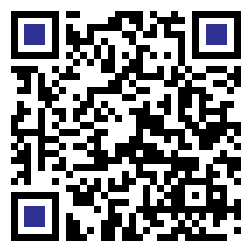Rancang Bangun Smart Church Broadcasting Sebagai Upaya Penguatan Sarana Prasarana Ibadah di Masa Pandemi Covid-19
DOI:
https://doi.org/10.54367/means.v6i1.1246Keywords:
Smart Church Broadcasting, Information Systems, Social MediaAbstract
The Covid-19 outbreak in Indonesia has changed the conventional worship procedures. Health protocols by the Government of Indonesia have Changed the worship of Church congregations from face to face become interface to interface through online worship. However, problems arise when Church administrators have little knowlege about the application of computer applications to Church services. This paper will explain the design of online-based worship using a smart broadcasting design using a simple V8 live soundcard, 16 channel audio mixer, OBS Studio 26.0.2, Computers, Church music equipment, handycam and social media channels. The results of this study are in the form of designing a Church worship system by utilizing the limited budget for purchasing professional broadcast equipment, but being able to digitize analog equipment owned by the Church. Futhermore, this study resulted in an equation of the application of Smart Church Broadcasting (SCB) using Fuzzy Tsukamoto.References
A. rizky anugerah, P. suksessanno muttaqin, and D. adi Purnama, “Effect of Large-Scale Social Restriction (PSBB) during COVID-19 on Outdoor Air Quality: Evidence from Five Cities in DKI Jakarta Province, Indonesia,†Environ. Res., vol. 197, no. November 2020, p. 111164, 2021, doi: 10.1016/j.envres.2021.111164.
F. Salesman and T. Mm, “Catholic Church Services in Pandemic Coronavirus Disease ( Covid-19 ) in the Diocese Ruteng - Indonesia,†J. Qual. Heal. care Econ., vol. 4, no. 2, 2021, doi: 10.23880/jqhe-16000208.
W. He, Z. Justin, and W. Li, “International Journal of Information Management Information technology solutions , challenges , and suggestions for tackling the COVID-19 pandemic,†vol. 57, no. December 2020, 2021, doi: 10.1016/j.ijinfomgt.2020.102287.
Terézia Ronˇcáková, “Closed Churches during the Pandemic : Liberal versus Conservative and Christian versus Atheist Argumentation in Media,†Department of Journalism, Faculty of Arts and Letters, Catholic University in Ružomberok. pp. 0–18, 2021.
N. B. Ossai-ugbah, “Ossai-Ugbah_use of ICT,†Int. J. Sci. Technol. Educ. Res., vol. 2, no. March, pp. 49–57, 2011.
J. Arthur and C. Rensleigh, “The use of online technologies in the small church,†SA J. Inf. Manag., vol. 17, no. 1, pp. 1–6, 2015, doi: 10.4102/sajim.v17i1.630.
A. Shah, S. Cheng, D. E. Longman, S. S. Goldsborough, and T. Rockstroh, “An experimental study of uncertainty considerations associated with predicting auto-ignition timing using the Livengood-Wu integral method,†Fuel, vol. 286, no. November 2020, p. 119025, 2021, doi: 10.1016/j.fuel.2020.119025.
W. M. Systems, “Selection and Operation Wireless Microphone Systems.†2014.
H. Davies, “Religious Devices : A Survey of Technologies of Worship .,†Intersect. Media Archaeol., vol. 7, no. 2, 2019.
G. E. Sadhvi and P. N. Tejus, “Automatic Detection of Stronger Wi-Fi Networks,†Int. Res. J. Eng. Technol., vol. 4, no. 11, pp. 1679–1681, 2017.
E. Nugraha, A. P. Wibawa, M. L. Hakim, U. Kholifah, R. H. Dini, and M. R. Irwanto, “Implementation of fuzzy tsukamoto method in decision support system of journal acceptance,†J. Phys. Conf. Ser., vol. 1280, no. 2, 2019, doi: 10.1088/1742-6596/1280/2/022031.
D. Y. Kristiyanto, B. Suhartono, and A. Wibowo, “Digital Forensic InnoDB Database Engine for Employee Performance Appraisal Application,†2019, doi: 10.1051/e3sconf/201.
Downloads
Published
How to Cite
Issue
Section
License
Copyright (c) 2021 MEANS (Media Informasi Analisa dan Sistem)

This work is licensed under a Creative Commons Attribution 4.0 International License.














